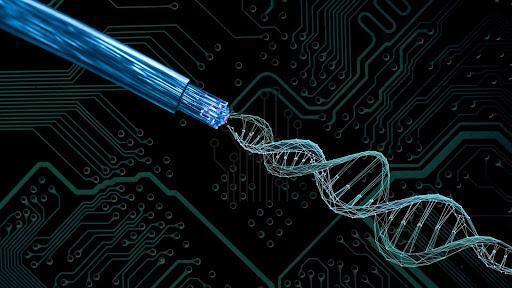
DNA’s Electron Flow May Unlock Future Biocompatible Electronics
In the quest for innovative and sustainable solutions, researchers have been exploring the electrical properties of DNA, and the latest findings may revolutionize the field of electronics. A recent study has revealed that the interaction between electrons and molecular vibrations, or phonons, creates novel pathways for electron transport in DNA strands. This groundbreaking discovery has significant implications for the development of smaller, more efficient, and biocompatible electronic devices.
DNA, the fundamental building block of life, has long been recognized for its unique properties and potential applications in various fields. Its electrical conductivity, although relatively weak, has been a subject of interest in recent years. The study in question aimed to elucidate the electron transport mechanisms in DNA strands, providing valuable insights for the creation of novel electronic devices.
Researchers from the University of California, Los Angeles (UCLA) and the University of California, Berkeley, used advanced computational methods to simulate the electron transport in DNA strands. Their findings showed that the interaction between electrons and phonons creates novel pathways for electron transport, allowing for more efficient and controlled movement of electrons.
Phonons are quanta of vibrational energy in molecules, and their interaction with electrons is crucial in determining the electrical properties of a material. In the case of DNA, the phonon-vibration dynamics play a significant role in determining the electron transport mechanisms. The study demonstrated that the phonon-induced electron-vibration coupling creates novel pathways for electron transport, which are not present in traditional electronic materials.
The implications of this discovery are far-reaching and significant. Firstly, it opens up new avenues for the development of biocompatible electronic devices. DNA is a naturally occurring, biodegradable, and biocompatible material, making it an attractive choice for medical applications. The ability to harness its electrical properties could lead to the creation of smaller, more efficient, and biocompatible devices for medical implants, biosensors, and other applications.
Secondly, the discovery could pave the way for the development of novel electronic devices with unique properties. The phonon-induced electron-vibration coupling in DNA strands could be leveraged to create devices with tunable electronic properties, such as conductivity, mobility, and sensitivity. This could lead to the development of novel electronic devices with improved performance, efficiency, and reliability.
Lastly, the study highlights the potential of DNA as a building block for future electronics. The ability to harness its electrical properties could lead to the development of novel electronic devices that are smaller, more efficient, and biocompatible. This could revolutionize the field of electronics, enabling the creation of novel devices that are more sustainable, efficient, and effective.
While the discovery is significant, there are still several challenges that need to be addressed before DNA-based electronic devices can be developed. For instance, the electrical conductivity of DNA is relatively weak, which limits its use in traditional electronic devices. Additionally, the phonon-induced electron-vibration coupling is still not fully understood, and further research is needed to elucidate its mechanisms and potential applications.
In conclusion, the recent study on DNA’s electron flow has significant implications for the development of biocompatible electronic devices. The discovery of novel pathways for electron transport in DNA strands, facilitated by the interaction between electrons and phonons, opens up new avenues for the creation of smaller, more efficient, and biocompatible devices. As researchers continue to explore the electrical properties of DNA, we can expect to see significant advancements in the field of electronics, enabling the development of novel devices that are more sustainable, efficient, and effective.






